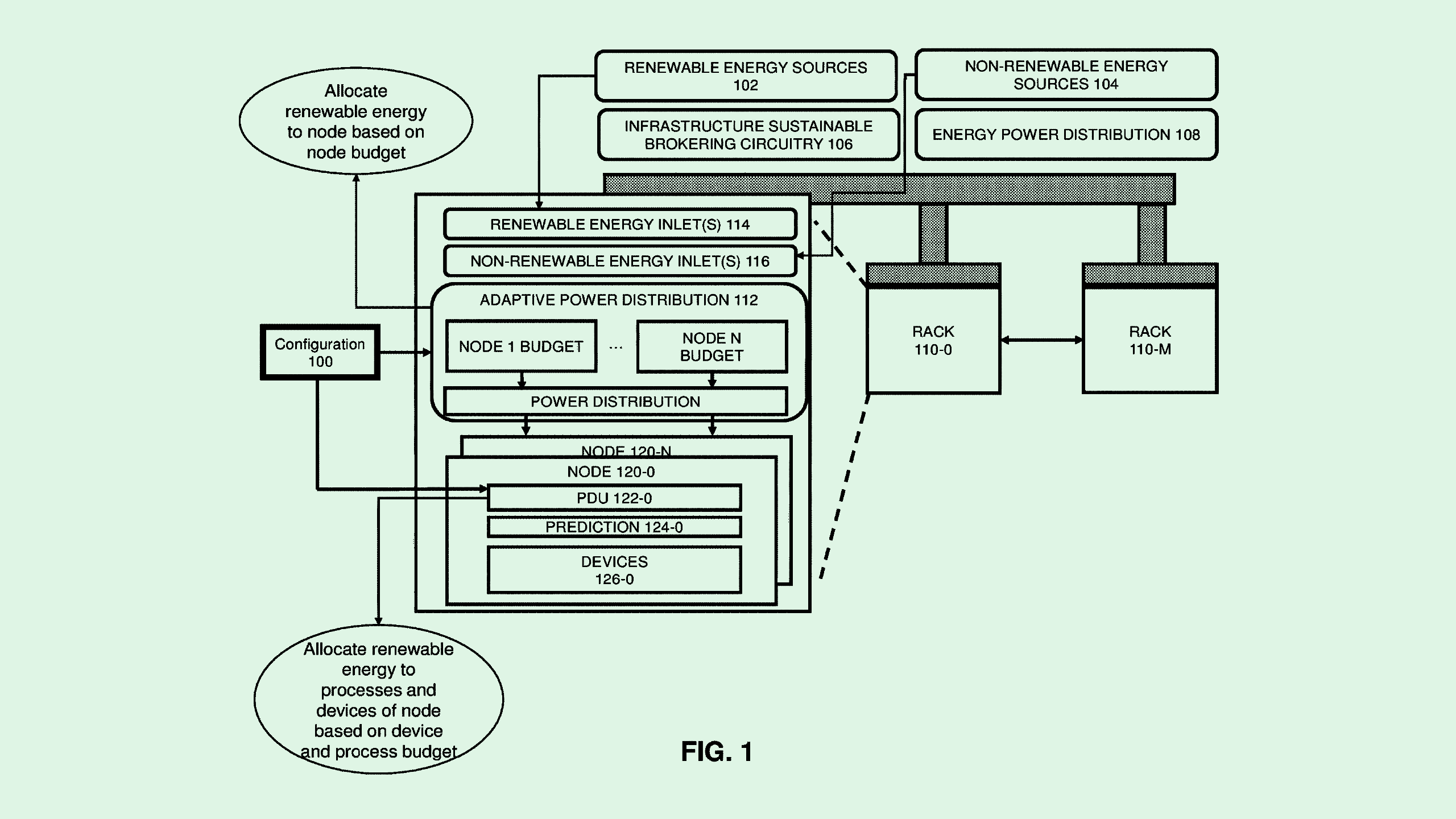In the Press

Photo via U.S. Patent and Trademark Office

Intel is looking at ways to make sure its data centers are using the right energy.
The company wants to patent “renewable energy allocation” for hardware. Intel’s system essentially budgets energy based on its availability, allotting renewables specifically to some processes, workloads or devices over others.
“Separation or demarcation between non-renewable grid power and renewable power may not be available,” Intel noted in the filing. “Devices can be powered without control of an amount of renewable power because devices may not have capability to control usage.”
Intel’s patent details a load-balancing system that optimally powers certain parts of a data center based on the level of renewable energy available versus the level of non-renewable energy. Intel’s technique would implement AI and machine learning into this process by predicting how much renewable energy is going to be available at certain times based on historical data, and providing a boost in the level of renewables that are allotted to certain processes based on this prediction.
The system could take into account data center tenants’ specifications and fluctuate power levels based on that, changing where it allocates power at any given time.
“Renewable power management schemes can increase renewable energy consumption to allow customers to reduce total cost of ownership (TCO) or otherwise comply with green energy requirements,” Intel noted.
Data centers historically haven’t been the most energy-efficient facilities. According to the US Department of Energy, data centers eat up 10 to 50 times the energy per floor space of a typical commercial office building, and account for roughly 2% of total energy use in the US. And as AI adoption and training continues to grow at a rapid clip, so does the tech industry’s reliance on these server farms.
Previous patents from Intel signal that it’s paying attention to the way AI uses energy. For example, the company previously sought to patent a system for “power-efficient machine learning” for images and video. But this patent tackles the data center as a whole, rather than just the individual models, to create the “optimal blend” of using renewable and high-carbon energy sources, said Trevor Morgan, VP of product at OpenDrives.
This patent’s other unique angle is that, if the data center’s hardware is being used for AI training, this represents AI keeping track of its own power consumption, Morgan noted. Intel’s tech could be a gateway to AI-based power regulation systems making recommendations on how to optimize renewable energy infrastructure, he said.
“This will be an interesting way of seeing if AI and (machine learning) can help to regulate its own sustenance, so that it’s looking upstream at what’s happening and in the context of the power situation,” Morgan said.
As it stands, this tech is still a stopgap to the problem of not having enough renewable energy resources generally. Though the system can try its best to optimally distribute clean energy, it still may need to fall back on high-carbon sources to keep the lights on.
While Intel lags far behind competitors like Nvidia and to a lesser extent AMD in the chips and data centers arena, patents like these could be evidence to Intel’s investors that they’re thinking about social responsibility as far as AI goes, Morgan said. “This is a brilliant marketing patent given that these (topics) are coming to the front and center,” he said. “That’s what it looks like to me: positive intent, thought leadership and maybe a little bit of overarching marketing.”